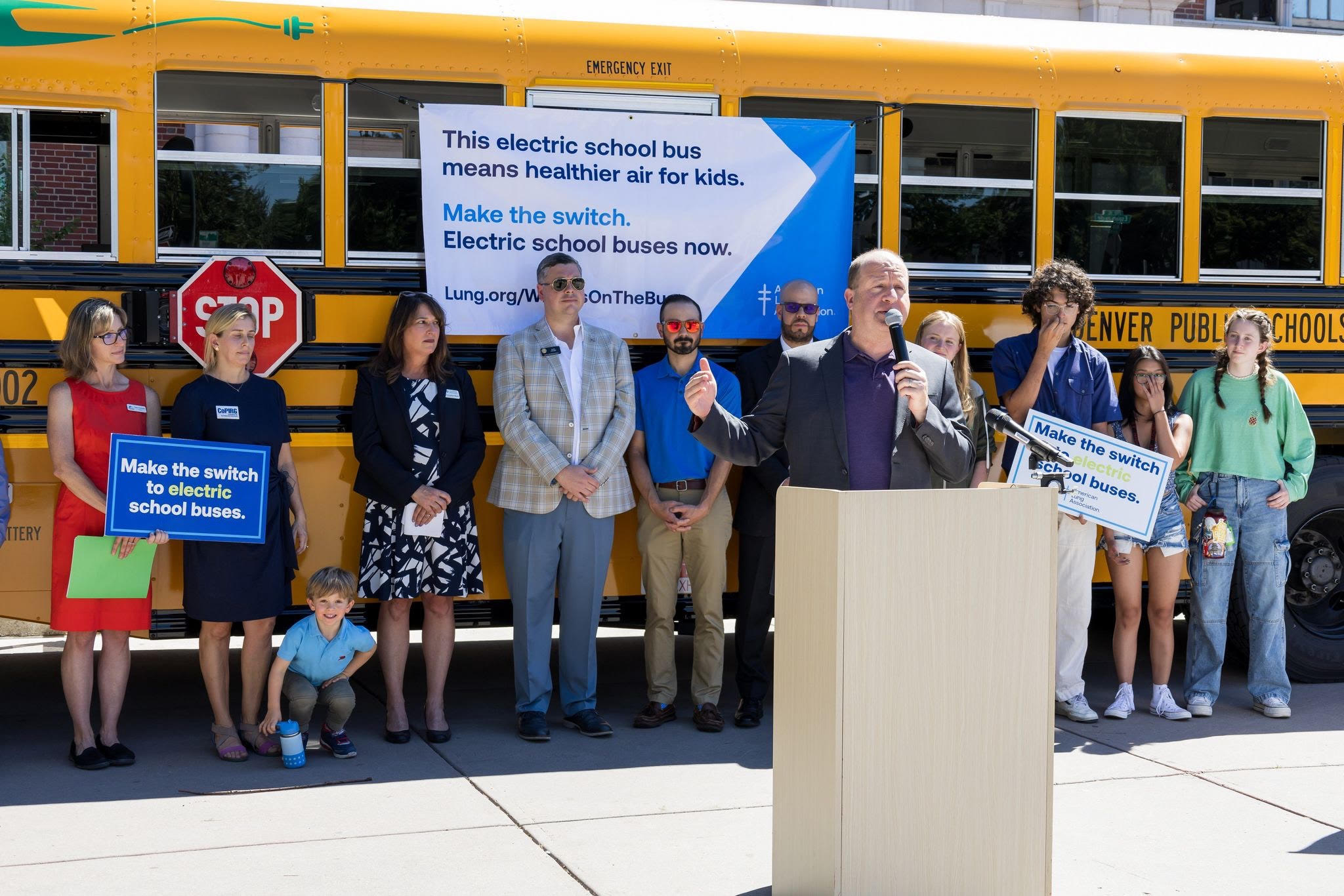
Accelerating the Transition to Electric School Buses
How schools, lawmakers and utilities can work together to speed the transition to zero emissions electric buses
This new report explains how school districts and utilities can work together to acclerate the switch to electric school buses, helping to reduce greenhouse gas emissions and protect the health of the kids that ride them everyday.
Downloads
U.S. PIRG Education Fund

The vast majority of school buses in the United States run on diesel, a fossil fuel that has been shown to cause numerous health problems, including asthma, bronchitis, and cancer. Diesel exhaust is also a greenhouse gas, which contributes to climate change. However, there is an alternative: zero-emission battery electric school buses.
The technology is here, and electric school buses are ready to roll, but the question remains: how do schools pay for them? While electric buses can save schools money over the lifespan of the bus, the initial price tag of a new electric bus can turn many schools off to the idea of electrification. In many cases, assistance from federal grant programs and loans are needed in order to finance such a purchase. In addition to these programs, utility investment, financing strategies and vehicle-to-grid technology provide promising opportunities that can help schools ease the transition and accelerate toward a zero-emission electric future.
Electric utilities have a lot to gain from the large-scale adoption of electric school buses, and could play a major role in supporting the transition. Electric buses can expand and stabilize the grid, provide surplus energy storage, and increase energy demand. By providing discounted rates on electric bus charging and building charging infrastructure, utilities can help speed the adoption of electric buses. Utilities can also support electric buses by investing in infrastructure for bus charging in depots and on routes, helping to finance the upfront purchasing costs of electric buses, and introducing smart charging systems to maximize integration of renewable energy. Several utility companies have already launched programs to help school districts adopt electric buses, including Dominion Energy in Virginia and Portland General Electric in Oregon.
Particularly promising options are vehicle-to-grid technology and Pay-As-You-Save programs. Vehicle-to-grid technology allows buses to send stored energy back to the grid. When equipped with vehicle-to-grid technology, electric buses can use their batteries for energy storage, providing a service to the grid by reserving and selling electricity back at times of high demand.
Pay-As-You-Save (or PAYS), or a tariffed on-bill program, is an agreement where the customer chooses to install a more energy efficient and cost-effective system, and the utility company covers the initial extra cost of the new technology. As the customer saves on their energy costs, the customer repays the utility company over the lifespan of the bus. These opt-in tariffs allow for customers to choose options that while more costly upfront, can save money and energy in the long run.PAGE 5
By pairing vehicle-to-grid technology and PAYS, each electric bus could save school districts up to $130,000 per electric bus.
Recommendations:
The transition to a clean, renewable transportation sector, and a more widespread clean energy economy requires coordination between school districts, lawmakers, and utility companies.
School districts should:
- Commit to transitioning to 100% all-electric buses by 2030, with a plan to phase out the purchase of new diesel buses immediately.
- Use any and all financing methods available, including state and federal grant programs.
- Engage with local utilities to help accelerate the adoption of electric buses.
Lawmakers should:
- Work with utilities and regulators to develop effective electric bus investment programs that protect ratepayers and consumers.
- Develop grant programs to assist school districts with the additional upfront cost of electric bus procurement.
- Commit to clean energy by tightening fuel efficiency and greenhouse gas emissions standards.
- Subsidize research and development in electric bus technology, including vehicle-to-grid.
Utility companies should:
- Make a commitment to renewable energy.
- Reduce emissions, increase grid capacity, and earn money by assisting school districts in financing electric school buses and investing in the charging infrastructure necessary for large-scale adoption.
- Launch vehicle-to-grid and PAYS pilot programs, and scale up as soon as practical.
- Establish bulk purchase savings programs to further lower the cost barrier to procurement for school districts.
*Correction: An earlier version of this report noted that switching to an electric school bus could save the community up to $55,000 a year in healthcare costs. This is an estimation for how much replacing a diesel transit bus with an electric transit in Chicago would save and is not necessarily reflective of the costs an electric school bus would save, which would also be signficant.
Topics
Find Out More


Electric vehicles are good. We can make them better.

Electric Vehicles Save Money for Government Fleets
